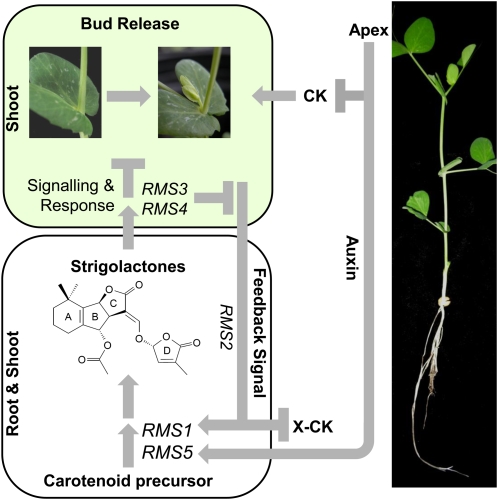Figure 3.
Strigolactone branching pathway. RMS1 and RMS5 are together required for the synthesis of the strigolactone bud outgrowth inhibitor that is carotenoid derived. Strigolactones (orobanchyl acetate, a strigolactone found in pea, is shown) are synthesized in the root and shoot, and move upward. RMS3 and RMS4 are both required local to the bud (in the shoot) to respond to the strigolactone branching inhibitor; response results in inhibition of bud release (as seen in the wild-type plant on the right) and down-regulation of the RMS2-mediated feedback signal. The feedback signal, in addition to auxin from the shoot apex, moves downward and up-regulates strigolactone biosynthesis via transcriptional regulation of RMS1 and RMS5 expression. The feedback signal also represses xylem-sap cytokinin (X-CK) export from the roots, and auxin represses local cytokinin (CK) production in the shoot. While mutations in any of the genes shown result in an increased branching phenotype, rms1 and rms5 are referred to as synthesis mutants, and rms3 and rms4 as response mutants. Flat-ended lines represent inhibition; arrows represent promotion or flow.

